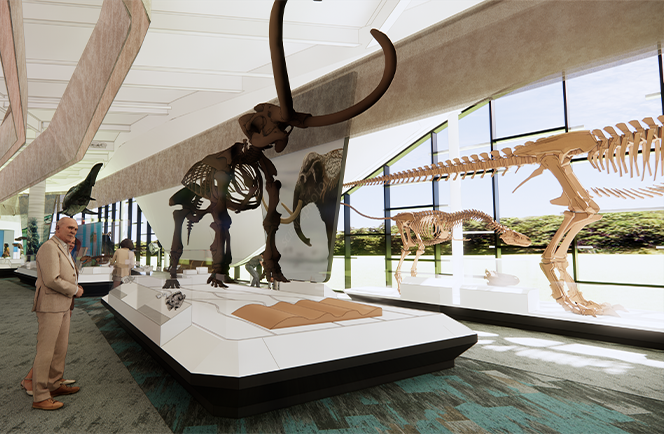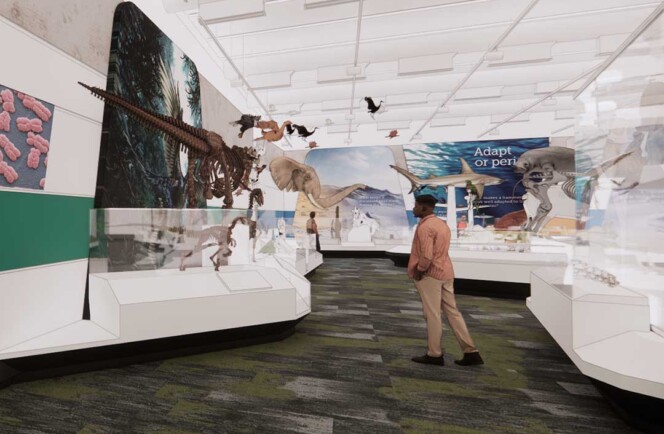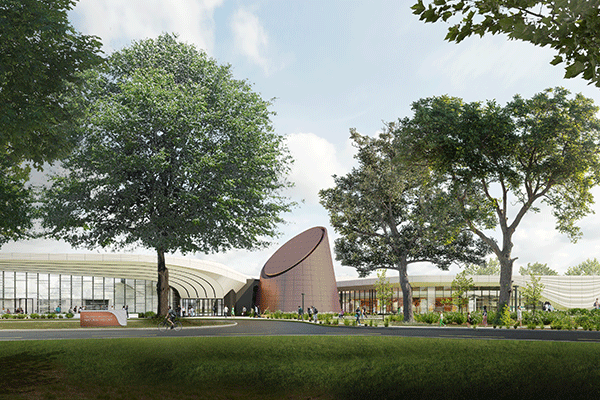An Opportunity to Democratize Science: New Curator Dr. Elizabeth Sawchuk on the Museum’s Transformation
As we reimagine the Cleveland Museum of Natural History, we are building an interdisciplinary team of scientists whose research will be fully integrated with our new exhibits and educational programs. Dr. Elizabeth "Ebeth" Sawchuk recently joined this team as the Museum’s Assistant Curator of Human Evolution.
October 26, 2022
Dr. Sawchuk’s research combines bioarchaeology, dental anthropology, and ancient DNA to reconstruct ancient population dynamics and understand how people adapted biologically and socially to change. Her work will complement the efforts of other Museum researchers, including Dr. Nicole Burt, Curator of Human Health & Evolutionary Medicine; Dr. Emma Finestone, Assistant Curator of Human Origins; Dr. Brian Redmond, John Otis Hower Chair and Curator of Archaeology; and Christine Bailey, Collections Manager of Physical Anthropology.
We spoke with Dr. Sawchuk to learn more about her research and her excitement for the Museum’s transformation. She is especially inspired by her belief in democratizing science and the potential to advance scientific knowledge through community engagement.
What should we know about your new role?
The Museum is a place where I can share my research, collaborate with our researchers to push ideas further, and make science accessible. Working to democratize science is one of my role’s essential—and exciting—aspects.
The truth is, if you make observations about the natural world, develop hypotheses, and use evidence to determine if those hypotheses are supported, you’re doing science. One of our goals at the Museum is to empower people to take on that mantle and understand what science is, and also be engaged in the scientific discoveries of our day.
One of the most compelling aspects of my role is helping to build the community around the Museum, so people feel comfortable engaging with scientific discoveries, asking questions, and understanding more about the ways science and the natural world impact their lives.
What can you tell us about your research?
My research investigates how herding and farming spread into sub-Saharan Africa beginning approximately 5,000 years ago, and how ancient peoples navigated issues of climate change, shifting economic and land-use strategies, and contact with diverse groups. My team integrates different lines of archaeological and biological evidence to understand how past peoples coped with major changes in their world and what lessons can be learned from their experiences.
A lot of my research is looking at signs of stress on the skeletons of ancient individuals. Skeletons are our only direct link to the people who experienced the past, and they can tell us a great deal about an individual’s life when considered alongside other archaeological evidence. My current project explores whether the first food producers in sub-Saharan Africa—who were mobile pastoralists—experienced the same kinds of stress that early farmers experienced in other parts of the world. This research is important as we consider how present-day climate change impacts the millions of pastoralists who live across eastern Africa, and how humans cope with environmental instability.
Humans are unique because we shape our environmental and cultural contexts, and in turn, our bodies are shaped by them. By exploring how ancient peoples and their bodies responded to different environmental, cultural, and economic circumstances, we can better understand what health looks like in the past and the present and use that information to better our world.
Why did you want to join the Museum?
I wanted to join the Museum because there are more opportunities to break down some of the traditional scientific silos that limit research and work toward developing truly interdisciplinary projects. At the Museum, my colleagues and I are exploring many of the same big questions about our world but we’re using all sorts of different approaches. Because we all work so closely together, however, we’re able to push our collective scientific work further.
For me, as much as I enjoy teaching college anthropology—and I plan to continue to teach it at Case Western Reserve University—it’s also really exciting to be able to talk to all sorts of people from all walks of life and get information out in different ways.
I also have noticed how much pride Clevelanders have for the Museum. There’s such love for this institution in the community. Just knowing how much this city values this space and science makes all of us want to work harder to make it special.
What part of the transformation project are you most excited about?
I’m excited about the scope of the transformation because it’s incredibly ambitious and hasn’t been done before. The opportunity to re-create everything—the physical building, exhibits, and programming—is completely changing our approach. It’s even changing how we do research and how we push toward collaboration across disciplines.
On top of that, we’re completely reevaluating the way that we handle our collections and trying to make them more accessible. This includes exploring new avenues of digitization and 3D scanning to be a model for what a museum looks like in the 21st century.
It’s incredible to be part of this group who are all working tirelessly to make this happen—from education to natural areas to research and collections to marketing—everybody coming together and sharing in this big vision. It’s absolutely electric.
Why do you think the Museum’s transformation is important now?
We want to be a place people can come to better understand the world and our place in it. And we want them to visit not once, but many times as both kids and adults. Because science and our world are constantly changing.
We want to invite the community into the Museum to learn—and co-create together. That’s how science moves forward. It’s not in an ivory tower. It’s all of us together, observing everything that we can see in the world and using that knowledge to better our community and the planet.
Science is part of everything we do every day. It’s so important to understand the scientific method and the process of scientific research, not only in terms of how it’s conducted, but also how it exists in our society, how science is funded, and what kind of research is done. Offering a window into that “democratizes science.”
That’s a phrase that I’ve heard frequently during the transformation project. It means that science doesn’t belong to anybody and you don’t need a particular educational background or to be from a specific place to do science. That’s something that belongs to all of us, and it’s something that enriches all of us.
One thing I’ve learned studying humans over the past 100,000 years is that tapping into our human sense of community and problem-solving ability is critical to dealing with the big issues of our time. That’s what we’re doing here at the Museum.

Exploring Our Past, Envisioning Our Future: New Curator Dr. Emma Finestone on the Museum’s Transformation
The Cleveland Museum of Natural History’s transformation includes a new, interdisciplinary strategy for collaboration among research staff. As part of this effort, the Museum recently appointed Dr. Emma Finestone Assistant Curator of Human Origins.

Experience Preview: The Evolving Life Wing
Exploring the Connections Among All Living Things

Support from the Jones Day Foundation
The Museum recently received a $300,000 grant from the Jones Day Foundation in support of the Transforming the World of Discovery campaign. The grant will help to fund the complete reimagining of our campus and all our exhibits.
